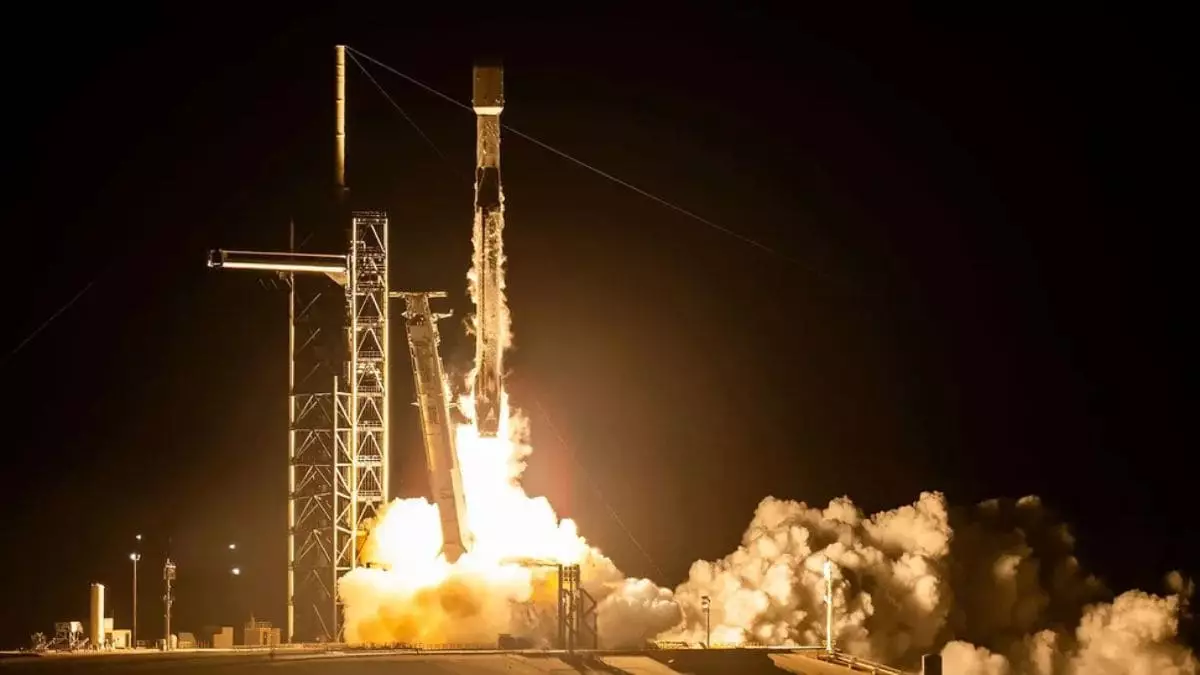In an audacious move that showcases the relentless innovation rooted in American entrepreneurship, SpaceX has set its sights on a staggering target of 170 orbital missions by 2025. This tally, which translates into nearly one launch every day, would shatter the company’s previous record of 134 launches achieved in 2023. Anne Mason, the director of national security space launch at SpaceX, discussed this ambitious agenda during a media briefing, pointing out the rapidly approaching normalization of such unprecedented launch frequencies. Yet, while these figures are groundbreaking, they also prompt a conversation about the implications of commercial space exploration’s escalating pace.
The Shift from Infancy to Maturity
To understand the significance of this rapid-fire trajectory, consider the context. In 2020, SpaceX managed a mere 25 launches—an average of one every two weeks. This trajectory reflects a paradigm shift not only in operational capacity but also in the perception of space travel itself. The dream of a bustling orbital marketplace is not as distant as it once was; the ascent of SpaceX propels discussions about the future of global communication, satellite services, and even space tourism. However, at what cost are these advances being made? The push for a saturated orbit carries potential consequences that demand scrutiny.
Efficiency or Overexertion?
At the heart of SpaceX’s unprecedented launch frequency lies the paradigm of operational efficiency. The use of reusable Falcon rockets has been heralded as a revolution in aerospace engineering, enabling cost-effective access to space. Yet, this relentless strive for reusability might lead to overexertion of technology and personnel. While Mason champions the efficiency achieved by the rapid production of rocket stages, the question arises: Can we sustain innovation without sacrificing safety? The balance between rapid advancement and meticulous consideration is delicate; a misstep could have dire repercussions, echoing through the annals of space exploration history.
The Starlink Juggernaut
Another significant element driving SpaceX’s launch ambitions is the relentless expansion of Starlink, the company’s low Earth orbit satellite internet constellation. With over 7,500 active satellites, SpaceX’s mission to provide global internet coverage is becoming a reality. However, the focus on this commercial pursuit raises ethical considerations. Are we prioritizing profit—and the allure of high-speed internet—over the long-term sustainability of our orbital environment? With nearly three-quarters of SpaceX’s launches attributed to Starlink in the past year, there’s an urgent need for dialogues around space traffic management and the minimization of space debris.
A New Era of Space Exploration
As SpaceX continues to redefine the boundaries of space travel, it also serves as a reflection of broader societal values. The ambitions of the private sector in space must be met with regulation and responsibility to ensure that our pursuit of knowledge and connectivity does not compromise the integrity of our cosmos. The company’s goal to achieve 170 missions is a thrilling testament to human ingenuity, but it compels each of us to question how we embrace this new era of exploration. With the right foresight, we might build a future in which technology serves humanity sustainably rather than merely feeding the insatiable hunger for speed and efficiency.


Leave a Reply